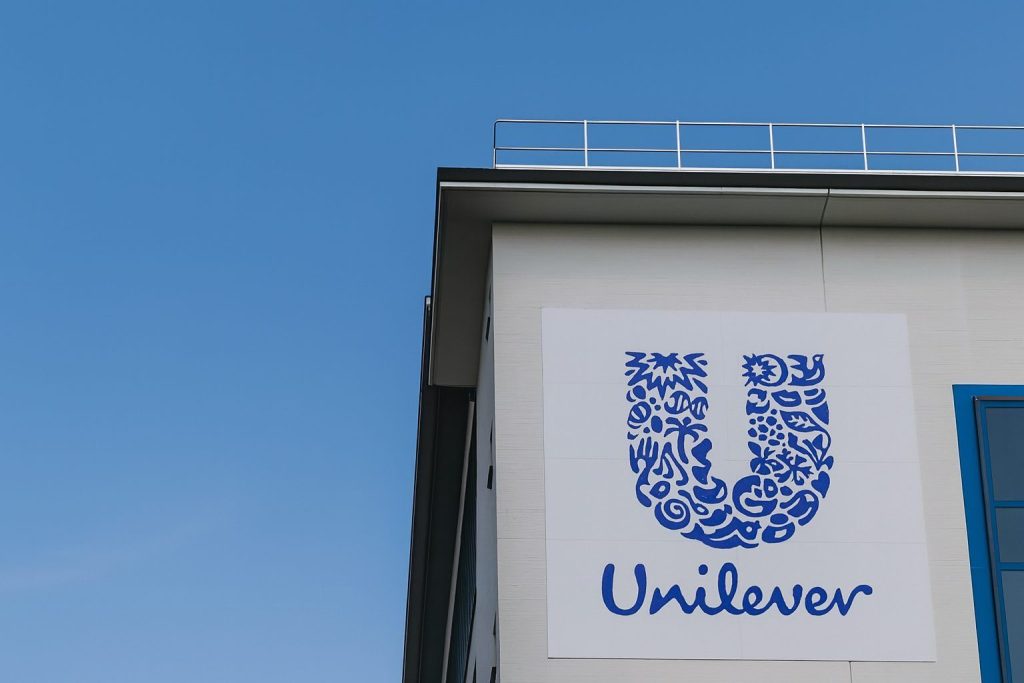Boohoo Group plc – now operating as Debenhams Group and trading under the DEBS ticker on London’s AIM market – is back in the spotlight today, 28 November 2025, after publishing half‑year results that show a dramatic narrowing of losses and a powerful share‑price rebound. [1]
For the six months to 31 August 2025 (H1 FY26), the online fashion group cut its statutory loss after tax for continuing operations to £3.4 million, down from £126.7 million a year earlier – a 97% improvement. Adjusted EBITDA ticked higher to £20 million, about 5% up on the prior year, even as revenue fell 23% to around £297 million. [2]
Despite that revenue drop, investors have rushed back in. Boohoo/Debenhams’ share price surged between 50% and 57% in Thursday’s session, and various estimates put the recent bounce at around 40–60% over the past month, though the stock remains sharply down over 12 months and since the start of the year. [3]
At the heart of the turnaround story: a booming Debenhams online marketplace, deep cost cuts, and a highly controversial £222 million executive incentive plan that has triggered a governance row with major shareholder Frasers Group. [4]
Key takeaways from Boohoo / Debenhams’ latest results
Here’s what markets are reacting to on 28 November 2025:
- Losses almost wiped out: Statutory loss after tax for continuing operations slashed to £3.4m from £126.7m in H1 2025. [5]
- Operating performance improving:
- Adjusted EBITDA: up 5% to £20m.
- Adjusted EBIT / underlying operating profit: around £1.8–2m, versus a £9m loss a year earlier. [6]
- Revenue and GMV under pressure:
- Revenue down 23% to about £297m.
- Group GMV (pre‑returns) down 19% to £630.8m; post‑returns GMV down 23% to £406.9m. [7]
- Debenhams division shines:
- Debenhams GMV up 20% to around £318.8m.
- Debenhams’ adjusted EBITDA up 50%, with margins around 15%. [8]
- Youth brands slump: GMV in Boohoo’s youth brands – including Boohoo and PrettyLittleThing – fell 41%, while Karen Millen declined 31%. [9]
- Costs and balance sheet:
- Operating costs down 27% year on year.
- Net debt reduced to £111m from £143m.
- Free cash outflow improved from £39m to £22m. [10]
- Guidance raised: Management now expects full‑year adjusted EBITDA of about £45m, up from £41.6m last year, with double‑digit growth targeted for FY27 and leverage (net debt/EBITDA) below 2× by FY27 and under 1× the year after. [11]
This mix – shrinking losses, better cash flow, but falling revenue – explains why markets are excited but analysts remain split.
Debenhams marketplace is now the growth engine
The headline of this turnaround is clear: Debenhams is carrying the group.
The Debenhams brand – acquired out of administration in 2021 and now the flagship of Debenhams Group – delivered a 20% jump in GMV to roughly £319m in the half‑year. Its adjusted EBITDA rose 50%, with margins around 15%, making it comfortably the group’s strongest business. [12]
By contrast, total GMV across the group fell 19%, and revenue dropped 23%. The company emphasises that this revenue hit partly reflects its pivot to a “capital‑light” marketplace model: on third‑party sales, Boohoo/Debenhams only books a commission, not the full value of the goods, so revenue appears smaller even when the platform’s activity is healthy. [13]
In plain language:
- Debenhams is becoming more like an online department store platform, hosting third‑party brands and taking a cut.
- That model frees up capital, can support higher margins, and leans on Debenhams’ strong name recognition with older and mid‑market shoppers.
Given the struggles of pure‑play fast fashion, investors clearly like this asset‑light marketplace story.
Youth brands struggle in a Shein and Temu world
While Debenhams is thriving, Boohoo’s historic core – its youth brands – had a rough half:
- Youth brands GMV down 41% to £258m.
- Karen Millen GMV down 31% to £54m. [14]
These declines come against a backdrop of ferocious competition in ultra‑fast fashion from Chinese‑owned players like Shein and Temu, which have undercut western rivals on price and speed and grabbed a huge chunk of younger shoppers’ attention. [15]
The group has chosen profit over volume, trimming marketing spend, consolidating ranges and closing less profitable lines rather than chasing every sale at any cost. That’s helped margins and losses, but it also means:
- Lower order volumes in the short term.
- Risk that some younger customers drift permanently to competitors.
Analysts at several outlets highlight that the turnaround in profit has been driven far more by cost cuts than by top‑line growth, and that underlying demand for Boohoo’s legacy brands still looks fragile. [16]
How cost‑cutting transformed the P&L
The scale of Boohoo/Debenhams’ restructuring over the last 18 months is striking:
- The group has cut its fixed cost base by nearly half, according to Hargreaves Lansdown’s analysis. [17]
- On top of that, media reports suggest total cost reductions of around £160m, with 2,500 jobs lost and further savings planned via warehouse closures and logistics consolidation. [18]
That has flowed straight through to the income statement:
- Operating costs down 27%. [19]
- Operating profit from continuing operations flipped from a £120.4m loss a year ago to a £6.6m profit in the latest half. [20]
- Underlying operating profit sits around £2m, versus a £9m loss in the prior period. [21]
Cash‑flow and leverage are also moving in the right direction:
- Free cash outflow improved from £39m to £22m.
- Net debt fell to £111m from £143m, and management targets further reductions to less than 2× EBITDA by FY27 and below 1× thereafter, with potential asset disposals (such as a stake in PrettyLittleThing or parts of its distribution estate) to accelerate deleveraging. [22]
The upside: Boohoo has bought itself time. A year ago, persistent heavy losses and negative cash flow raised real doubts about the business model. Today, the P&L is far more sustainable – if management can stabilise the top line.
The £222m executive bonus plan fuelling a governance storm
The most controversial element of this week’s announcements – and a major reason Boohoo is all over the news today – is not the numbers, but the new executive incentive plan.
Key details, as reported by multiple outlets: [23]
- The “Group Turnaround Scheme” is potentially worth £222m in shares across senior management.
- CEO Dan Finley could receive up to £148.1m in stock if demanding performance and share‑price hurdles are met.
- CFO Phil Ellis could receive £14.8m, with other executives also in line for significant awards.
- The main trigger: the share price must reach and hold around £3 within five years, implying a market value of about £4.2bn – roughly 25× the company’s current valuation before the announcement.
- The scheme will not be put to a shareholder vote, with Boohoo citing concerns about interference from major shareholder Frasers Group, which holds roughly 29% and has clashed with the board over governance and strategy.
This is contentious because:
- It follows a period where group sales are down 23%, and thousands of jobs have been cut to stabilise the business. [24]
- Boohoo already faced heavy criticism over previous executive pay awards while the share price fell. [25]
- Bypassing a shareholder vote on such a large plan – essentially to sidestep a likely veto by Frasers – has alarmed governance watchers and raised questions about minority investor rights. [26]
Supporters argue that the targets are so demanding that the scheme only pays out if all shareholders enjoy a huge re‑rating. Critics counter that the optics are terrible: executives stand to make life‑changing sums while many stakeholders are still living with the consequences of job cuts and prior mis‑steps.
How the market and analysts are reacting on 28 November 2025
Financial media and broker commentary today paint a nuanced picture.
- Several outlets describe the results as better than expected, with earnings “ticking higher”, cost savings delivering a positive profit surprise, and guidance for full‑year EBITDA raised. [27]
- Others warn that the turnaround is still heavily cost‑driven, with weak sales trends in the youth brands and ongoing competitive pressure. Hargreaves Lansdown and Citywire emphasise that the strategy “has yet to deliver the growth investors hoped for”. [28]
- Proactive Investors notes that while the shares “strutted” more than 20% higher on the day, the group remains loss‑making, and the near‑term sales outlook “doesn’t seem to be improving much.” [29]
- Simply Wall St points out that revenues are still shrinking even as the share price has jumped around 44% over the past month, underlining that the market is betting on future profitability rather than current growth. [30]
Meanwhile, investor‑facing commentary on platforms like Yahoo Finance and The Motley Fool frames the move as a possible “deep value turnaround play”: cheap on depressed earnings, now showing real signs of operational progress, but still very risky in light of past scandals and cut‑throat competition. [31]
In short, sentiment has improved sharply, but conviction is still fragile.
What this means for Boohoo / Debenhams investors
Zooming out, here’s how today’s news reshapes the investment narrative:
The good news
- Survival risk has fallen
- Near‑breakeven statutory results and positive adjusted EBIT/EBITDA dramatically reduce fears of an equity raise purely to plug losses. [32]
- The model is changing, not just shrinking
- Debenhams’ success shows that a department‑store‑style fashion marketplace can work online, with better margins and lower capital intensity than holding inventory for every brand. [33]
- Debt is manageable (if guidance holds)
- With net debt falling and management targeting leverage below 2× EBITDA within a couple of years, the balance sheet looks far healthier than in 2024. [34]
The risks
- Top‑line growth is still negative
- Double‑digit declines in GMV and revenue cannot continue indefinitely. If demand for youth brands fails to recover, cost savings will eventually run out. [35]
- Reputational and governance overhang
- The decision to implement a £222m incentive plan without a shareholder vote, especially after prior pay controversies, could weigh on the valuation and keep ESG‑focused investors away. [36]
- Competitive pressure isn’t going away
- Shein, Temu and other online players continue to squeeze margins and customer loyalty. Boohoo must prove that a mix of Debenhams marketplace + more focused youth brands can stand out in this crowded field. [37]
What to watch next
For anyone following Boohoo/Debenhams after today’s headlines, a few milestones will be crucial over the next 12–24 months:
- Revenue stabilisation
- Do GMV and revenue declines ease in H2 FY26 and FY27? A move from double‑digit decline to flat (or low single‑digit growth) would be a key signal that the business has passed the worst.
- Debenhams’ growth trajectory
- Can Debenhams sustain 20%+ GMV growth and mid‑teens EBITDA margins? If yes, it could justify the rebrand and support a structurally higher valuation. [38]
- Youth brands repositioning
- Investors will look for evidence that Boohoo and PrettyLittleThing can win back customers through better product, faster delivery, and more disciplined marketing – without a return to profitless discounting.
- Execution on debt and disposals
- Progress on reducing net debt below target thresholds, and any asset sales (for example minority stakes in PLT or logistics assets), will be closely watched. [39]
- Fallout from the pay plan
- Regulatory scrutiny, proxy‑adviser recommendations and any escalation of the dispute with Frasers Group could all influence the share price, regardless of trading performance. [40]
Bottom line
On 28 November 2025, Boohoo/Debenhams stands at a genuine turning point:
- The P&L looks dramatically better than a year ago.
- Debenhams has emerged as a powerful digital marketplace franchise.
- The share price has staged a spectacular short‑term comeback, even if longer‑term holders are still deep in the red.
But this is also a company:
- Still facing shrinking sales in its legacy brands,
- Grappling with intense competitive pressure,
- And now sitting at the centre of a high‑stakes governance battle over an eye‑watering executive pay scheme.
For investors, Boohoo/Debenhams is no longer an obvious distress story – but it remains a high‑risk, high‑reward turnaround bet, not a settled comeback.
References
1. en.wikipedia.org, 2. markets.ft.com, 3. www.wsj.com, 4. www.theguardian.com, 5. markets.ft.com, 6. markets.ft.com, 7. us.fashionnetwork.com, 8. www.investing.com, 9. us.fashionnetwork.com, 10. markets.ft.com, 11. markets.ft.com, 12. www.investing.com, 13. us.fashionnetwork.com, 14. us.fashionnetwork.com, 15. www.theguardian.com, 16. citywire.com, 17. www.hl.co.uk, 18. www.theguardian.com, 19. us.fashionnetwork.com, 20. www.rttnews.com, 21. www.hl.co.uk, 22. markets.ft.com, 23. www.theguardian.com, 24. www.theguardian.com, 25. en.wikipedia.org, 26. www.thetimes.com, 27. www.lse.co.uk, 28. www.hl.co.uk, 29. www.proactiveinvestors.com, 30. simplywall.st, 31. uk.finance.yahoo.com, 32. markets.ft.com, 33. www.investing.com, 34. markets.ft.com, 35. us.fashionnetwork.com, 36. www.thetimes.com, 37. www.theguardian.com, 38. www.investing.com, 39. markets.ft.com, 40. www.thetimes.com










